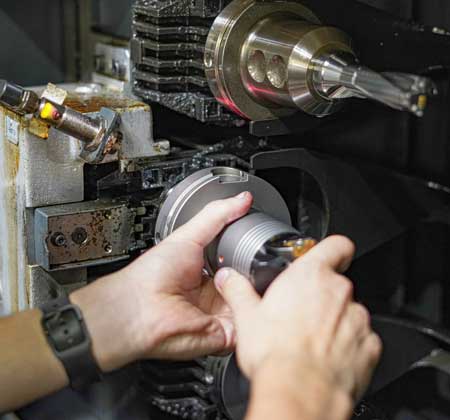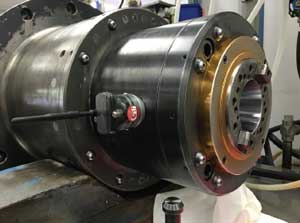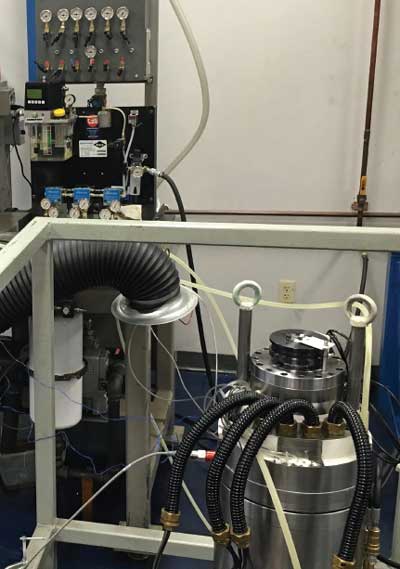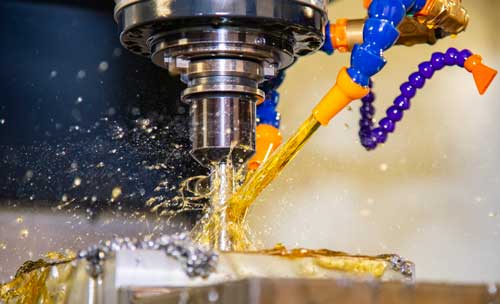
In machining, there’s no denying that some form of spindle maintenance should be in place to mitigate failures and downtime. While the ultimate goal of any maintenance strategy is to reach net-zero downtime, the method employed will dictate how close manufacturers can come to achieving that goal. Approaches to spindle maintenance fall into three categories: reactive, preventive, and predictive. Understanding these levels will help in determining which strategy is best for you.
They are as follows:
Reactive
Although dated, widely practiced reactive maintenance is just that: racing to remedy spindle failure after a fault has already occurred. With reactive maintenance, you will always experience unplanned downtime. Even if you’re prepared and have a back-up spindle on hand, swapping them out gobbles up time and labor resources. In addition to costly production halts and delayed schedules, the spindles themselves are prone to a shorter life expectancy as they are run closer, if not to a literal breaking point. Since reactive methodologies often result in finding quick solutions, spindle efficiency is greatly reduced. This affects both its health and the organization’s bottom line as additional resources are consumed to keep pace with production timetables. This is especially true when smaller spindle issues are ignored at first. Remember, as we mentioned in the past, if you can hear a spindle issue, chances are it’s in a later stage of failure. The later the stage, the greater the failure, and costlier it is to repair or replace it.
Preventive
Also known as planned maintenance, preventive maintenance is the first tier of machine monitoring that is tailored to reduce occurrences of unplanned downtime. Conducted based on usage or time triggers, spindle maintenance is routine. While this strategy is effective in avoiding unplanned downtime, the cost of servicing machines based on usage as opposed to analytics results in some cases, over-servicing the machines. It also requires exceptional record keeping, and a commitment to sticking with the schedule. It’s easy to put off, especially if the machining center is in the middle of a production run. But kicking this can down the road is risky and could lead to much bigger, yet completely avoidable breakdowns and repairs.
Predictive

Driven by the Internet of Things (IoT) and rooted in data collection and analytics, predictive maintenance utilizes spindle condition monitoring to pinpoint at-risk units and identify smaller issues before they get out of hand. This is in stark contrast to reactive and preventive strategies.
Predictive maintenance programs provide floor technicians with the ability to not only identify faults, but also enable informed diagnoses to enhance efficiency and extend a spindle’s life expectancy. In addition to monitoring vibrational and ultrasonic frequencies, many predictive programs utilize thermography technology to identify the slightest decrease in performance so it can be corrected quickly to minimize downtime.
As the most proactive approach to managing machine health, a well-designed predictive maintenance program, employing solutions such as our VibePro spindle monitoring system, can decrease manufacturing costs by reducing downtime and maximizing machine efficiency.
To enjoy the operational benefits and cost savings of predictive strategies, contact us to learn more about our powerful, industry-changing machine tool monitoring solutions.


 Equipment maintenance is one of the biggest cost centers for many manufacturers. Machine tool operators are certainly no exception to this rule. Maintenance programs of the past sought to increase the uptime and lifespan of spindles by ensuring they were well cared for on a routine basis, thus minimizing the chance that they would break down at the worst possible time (which they always seem to do), halt production, and negatively impact work order completion rates.
Equipment maintenance is one of the biggest cost centers for many manufacturers. Machine tool operators are certainly no exception to this rule. Maintenance programs of the past sought to increase the uptime and lifespan of spindles by ensuring they were well cared for on a routine basis, thus minimizing the chance that they would break down at the worst possible time (which they always seem to do), halt production, and negatively impact work order completion rates. It’s important to appreciate just how quickly technology has progressed in the previous two decades. Not only have our devices gotten smarter but the cost of accessing high-speed internet and cloud data storage has made accessing “big data” a possibility for almost every business. This combined with the increased accuracy and effectiveness of sensor technology means that many machine shops can invest in a predictive maintenance solution with very low overheads.
It’s important to appreciate just how quickly technology has progressed in the previous two decades. Not only have our devices gotten smarter but the cost of accessing high-speed internet and cloud data storage has made accessing “big data” a possibility for almost every business. This combined with the increased accuracy and effectiveness of sensor technology means that many machine shops can invest in a predictive maintenance solution with very low overheads. Spindles are super-precision components with incredibly precise operating parameters. Testing the balance of a spindle is a good way to help ensure a new spindle is installed and will perform correctly.
Spindles are super-precision components with incredibly precise operating parameters. Testing the balance of a spindle is a good way to help ensure a new spindle is installed and will perform correctly. After your spindle is in balance, the next step is to gather baseline vibration measurements. Vibration measurements are less common but arguably as important, if not more so, as balance correction.
After your spindle is in balance, the next step is to gather baseline vibration measurements. Vibration measurements are less common but arguably as important, if not more so, as balance correction.
 Spindles are super-precision instruments that require the highest degree of care, handling, and calibration. This means that installation can be rather a complex process.
Spindles are super-precision instruments that require the highest degree of care, handling, and calibration. This means that installation can be rather a complex process. After physically mounting a spindle, the lubrication system must be connected. Ensuring cleanliness of the system is of utmost importance, as there is no filter between the lubricator and the spindle. When connecting a mounted spindle to the lubrication system, consider the following:
After physically mounting a spindle, the lubrication system must be connected. Ensuring cleanliness of the system is of utmost importance, as there is no filter between the lubricator and the spindle. When connecting a mounted spindle to the lubrication system, consider the following:
